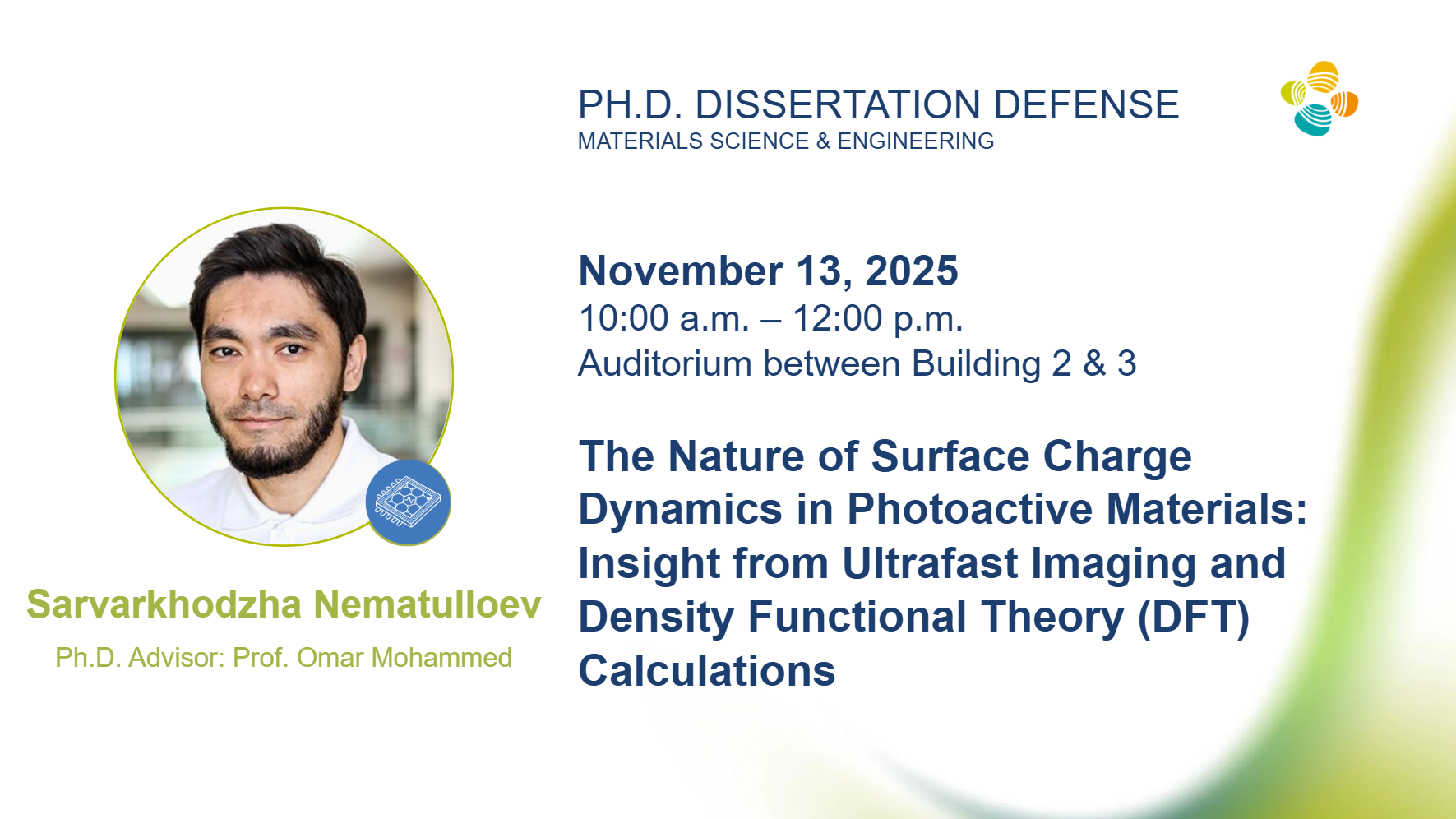Nov 2025
The Nature of Surface Charge Dynamics in Photoactive Materials: Insight from Ultrafast Imaging and Density Functional Theory (DFT) Calculations

Committee Members Information
- Ph.D. Advisor: Professor Omar Mohammed
- Committee Chair: Professor Huabin Zhang
- External Examiner: Professor Xuewen Fu
- Committee Member: Professor Shadi Fatayer
Abstract:
The efficiency and operational stability of photoactive materials are governed by ultrafast charge-carrier dynamics, which unfold on femtosecond to picosecond timescales and are strongly influenced by surfaces and interfaces. Because these regions control charge separation, recombination, and transport, developing methods that combine femtosecond temporal resolution with nanometer spatial sensitivity is essential for uncovering the microscopic processes that dictate device performance.
This thesis investigates surface charge dynamics by combining Four-Dimensional Ultrafast Scanning Electron Microscopy (4D-USEM) with first-principles simulations (DFT). 4D-USEM synchronizes femtosecond laser excitation with pulsed electron probes, producing time-resolved secondary-electron (SE) images that map surface dynamics with femtosecond–nanometer precision. This technique bridges the gap between bulk optical spectroscopy and static electron microscopy, providing a uniquely surface-sensitive window into ultrafast carrier behavior.
Initial experiments on model semiconductor surfaces underscore the decisive role of surface chemistry. Systematic measurements conducted before and after controlled argon sputtering reveal that oxide-terminated surfaces exhibit an increase in work function upon excitation, suppressing SE emission and appearing as dark contrast in time-resolved images. In contrast, oxide-free surfaces display a decrease in work function, enhancing SE emission and producing bright contrast. These complementary behaviors demonstrate that surface composition directly influences ultrafast charge redistribution and transient photovoltage formation, providing compelling evidence that chemical termination governs interfacial dynamics on femtosecond timescales.
The methodology is further applied to halide perovskite single crystals, where crystallographic orientation is shown to critically affect carrier transport. MAPbI₃ with (001) orientation supports higher carrier density and longer diffusion lengths than (110), highlighting orientation and termination control as practical design levers. In mixed-cation systems, FA₀.₆MA₀.₄PbI₃ exhibits longer lifetimes than FA₀.₄MA₀.₆PbI₃. DFT reveals that FA-rich compositions lower the barrier for iodide migration from bulk to surface, enabling vacancy passivation, while simultaneously raising the barrier for ion escape into vacuum, thereby suppressing new vacancy formation. Finally, Cd-doped FAPbI₃ stabilizes the α-phase, reduces trap densities, extends lifetimes, and increases diffusion lengths, establishing doping as a complementary strategy for performance enhancement.
By integrating ultrafast electron microscopy with first-principles theory, this work advances fundamental understanding of light–matter interactions and establishes practical design rules for durable, high-efficiency optoelectronic and energy-conversion devices.